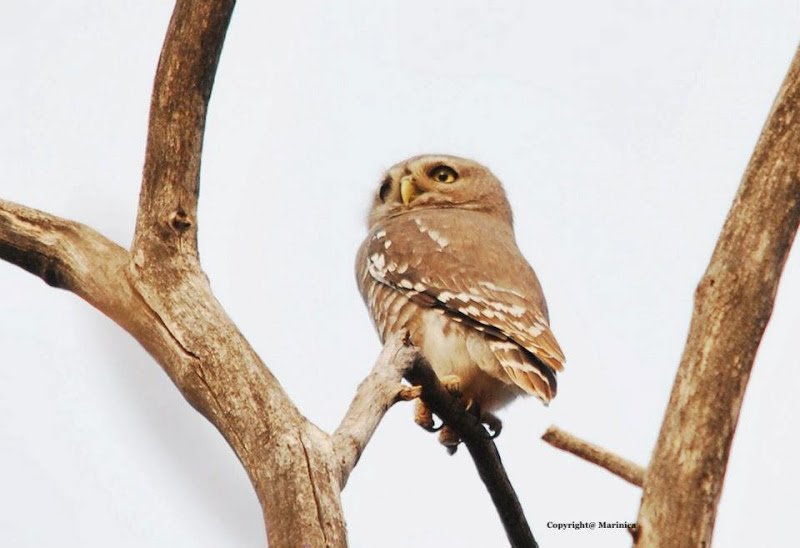
Now nearing 50 and duly lost in a mid-life crisis, Dragan Simic took to birding rather late – only half a lifetime ago, after successfully testing his inadequate skills in other life threatening activities, such as rock climbing and vertical caving. In the end, it was birding that has taken him from his native Serbia, across the Balkans and Turkey, to the very borders of the Old World: East Anglia and Spain, southern Africa and, in the instance of this epic report, India. We look forward to many more missives from Dragan.
It’s still dark at 5 am when the alarm on my mobile phone wakes me up in a spacious guest house room in Chikhaldara (Maharashtra, central India)… morning after morning after morning… I am getting tired, but the reason behind it was one rare bird – so rare that I have traveled 6000 kilometers to search tropical dry deciduous forests of the Satpura range just to look for the endemic and critically endangered Forest Owlet (Heteroglaux blewitti). This species was discovered (shot, actually) in the 19th century, only to be lost through the entire 20th century.
Before the trip, Nitin Bhardwaj asked me: “What if we dip it?” “Not a problem, I would be happy just searching for it. It is not about the success of the attempt, but the attempt hides a deeper meaning in itself.” I have a quick cup of black tea and off we go.
A tin yellow tiger is staring at us from the Melghat Tiger Reserve gates, as the narrow tarmac road winds through teak forest (Tectona grandis) along the hillside. Every now and then, we stop to scan the tree crowns and dry leaves of winter, hoping to spot a blackish-brown owlet with rather plain crown, white underparts and the most charming yellow eyes. A lot of leaves have fallen off, yet, a lot still cling to the branches and the crowns are pretty thick. Add to that that the teak leaves can be 45 centimeters long and 23 cm wide – and our owlet is barely 23 cm long!
“Wait, I think I have seen an owlet shaped leaf.” We go back several meters and… “Yes. I have seen an owlet shaped leaf. Let’s go.”
The Forest Owlet is an endemic species of this mountain range. It was described in 1873, seen for the last time in 1884 and considered possibly extinct until it was rediscovered 113 years later by an American ornithologist Pamela Rasmussen. This bird is known from only a dozen localities, with only a handful of individuals and a very fragmented habitat, hence the critically endangered status in the Red Book (one of 197 such species – also my fifth). What are the threats? We don’t really know – if we put aside already well documented habitat destruction. There is a theory that these hill forests aren’t its primary habitat, but more of a refuge, after the lowland forests were clear cut for agriculture.
From the next curve in the road, I can see the cows grazing deep in the valley: “If I was a tiger, I would check my prey from here.” Nitin was talking to rangers and explains: “A few days ago, one of the 70 or so tigers in the reserve has indeed taken a cow. Later, the carcass was taken away from the predator, so it would not get used to such prey.”
Slowly, the size of the task we have taken dawns on me: the reserve has more than a thousand square kilometers and only about a hundred Forest Owlets – the biggest known population anywhere in the World. And they hide among leaves twice the size of owlet. We are searching tree crowns: Indian Grey Hornbill, White-bellied Drongo… It is estimated that the global population of Forest Owlet is less than 400 birds strong (from 70 to 400, with a maximum of 250 adults within the population).
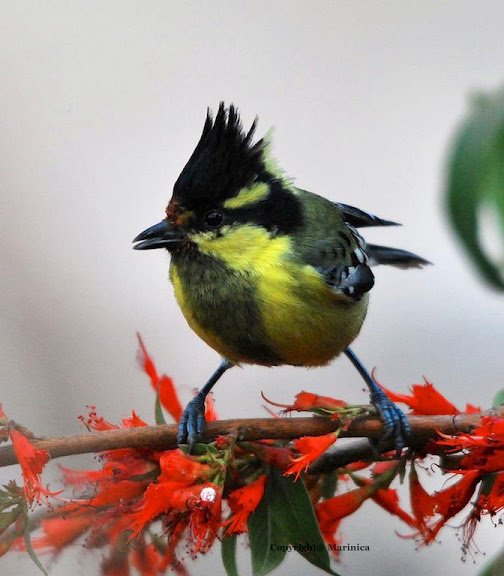 Indian yellow Tit © Marina Vukovic-Bhardwaj
Indian yellow Tit © Marina Vukovic-Bhardwaj
From a bamboo thicket at the next curve, one half-interested Southern plains Gray Langur is watching the four of us as we pass in Nitin’s Bolero. Local villagers are commuting along this road on their motorbikes, but somewhere by the road, a tigress gave birth and is now very territorial, sometimes chasing bikers when she feels that they have dared to come too close.
We stop again and search the leaves: Rufous Treepie (a rather handsome forest crow), Greater Racket-tailed Drongo with its long streamers, Lesser Goldenback woodpecker… We’re winding through the forest. Several more Langurs, but not a trace of an owlet.
Dry riverbed, a bush bursting with pinkish-red flowers, a noisy flock of Jungle Bubblers on duty… and something glossy blue! We break for… a beautiful Malabar Whistling Thrush (another lifer), only to discover a busy bird party: Asian Paradise-flycatcher (my first white morph male and the second paradise-flycatcher in my life list – I have observed an African one in Botswana before), Black-hooded Oriole, White-browed Fantail, Oriental White-eyes, Red-breasted Flycatcher, White-throated Kingfisher, White-eyed Buzzard, Greenish Warbler, Red-whiskered Bulbuls, Indian Yellow Tit (which become a full species after a split from Black-lored Tit in 2005, by Pamela Rasmussen). This many birds at the same site (out of 250 of the reserve checklist) have lightened our spirits, but still – no owlet!
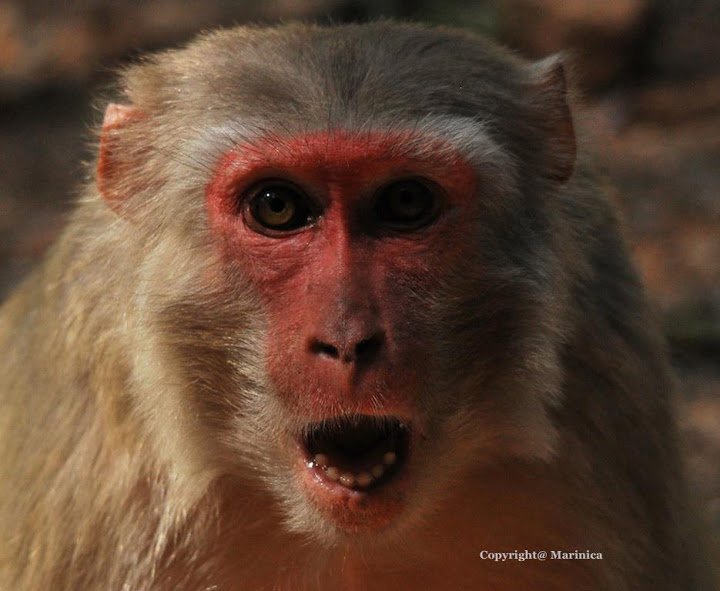 Rhesus Macaque © Marina Vukovic-Bhardwaj
Rhesus Macaque © Marina Vukovic-Bhardwaj
It is midday and it’s getting hot. We are planning to return to Chikhaldara for lunch, just a quick stop at the Semadoh tourist information center to check for a guide who might be able to show us the owlet… The guide will be here by three o clock, they say. The time quickens, we hurry for lunch (and a Kingfisher Beer – birders staple in India) and back to Semadoh for Bhola Mawaskar. Bhola claims that he can show us the owlet (his name, “bhola”, stands for “I have spoken” in Hindi). We should check if he is a man worthy of his word.
We are driving along the main road, by troops of Rhesus macaques, and continue by a dirt road into the forest, passing by two handsome but ever-present Indian Peacocks. The Forestry Department checkpoint is unlocked for us (good to know that endangered birds are kept locked) and we drive on through the teak forest that is almost leafless (stronger winds, I suppose). I wasn’t checking leafless and naked tree crowns before, assuming that owlets would be hiding in the leaves. Two Spotted Doves, Black Drongo, Rose-ringed Parakeet… and Bhola say: “You can see it now.” Where??? I am scanning the branches, desperately and unsuccessfully… “There it is!” There is no doubt – Bhola is a man of his word.
And our owlet is in a high branch, with its back toward us. It rotates its head 180 degrees to keep an eye on us. Humbly, we approach on foot. The Forest Owlet is watching us – we are staring in awe. Enchanted. The bird that was lost for more than a century is looking at us. Raising and lowering its head, like stretching. And it becomes a motionless observer once more.
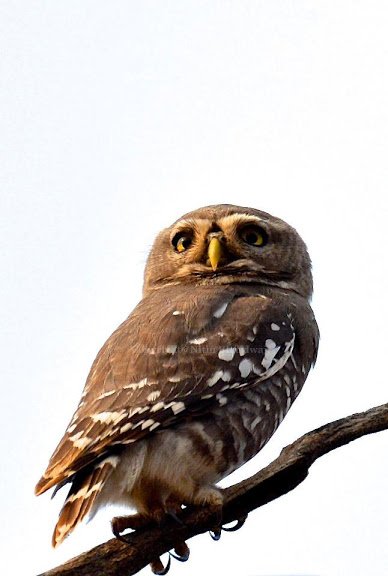 The critically endangered Forest Owlet © Nitin Bhardwaj
The critically endangered Forest Owlet © Nitin Bhardwaj
It is not all – Bhola says: “There is another one nearby.” We are walking along the dirt road, checking every leaf… nothing. Maybe it is not at home? Plum-headed Parakeets are flying through branches. Bhola is pishing – to no avail… we walk further and.. there it is! Two, out of a hundred known in Melghat. With one owlet per more than ten square kilometers, it would have taken us ten months to find one ourselves! I am taking a photo or two, but the sun is falling behind the ridge and the light is fading. Yet, there is more than enough light to study the birds by binoculars.
After almost an hour, through dusk we drive back, euphoric like pilgrims returning from the pilgrimage. One Indian Muntjac deer quickly crosses two beams of light. Driving with head lights, we hope for some predator, but only Indian Hare show up. Inside the Bolero, Shane’s voice echoes through our minds: “I’m sitting on top of the world.”


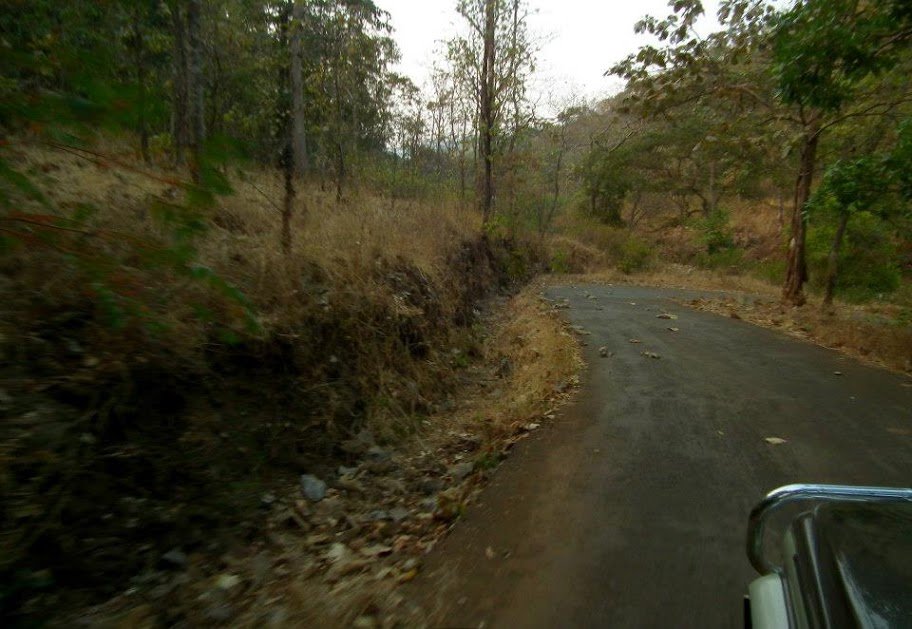
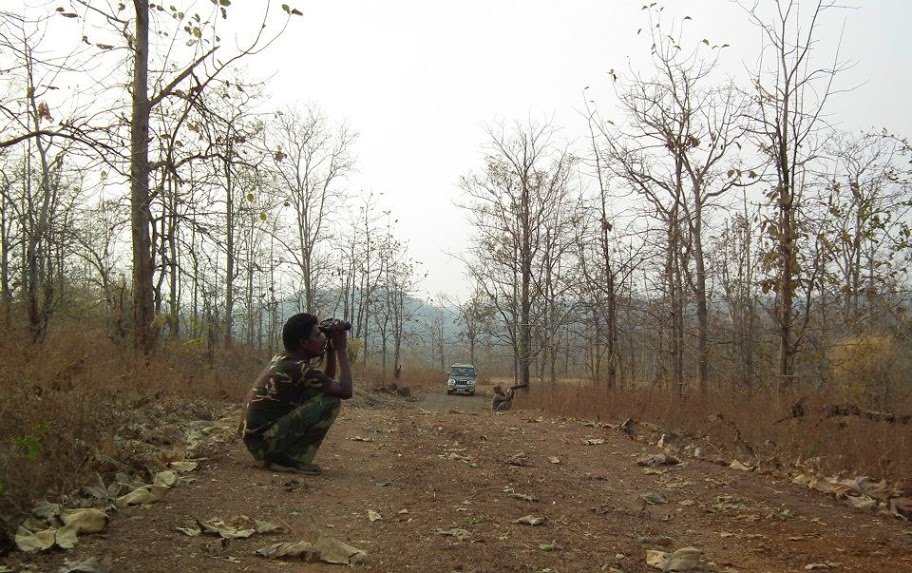
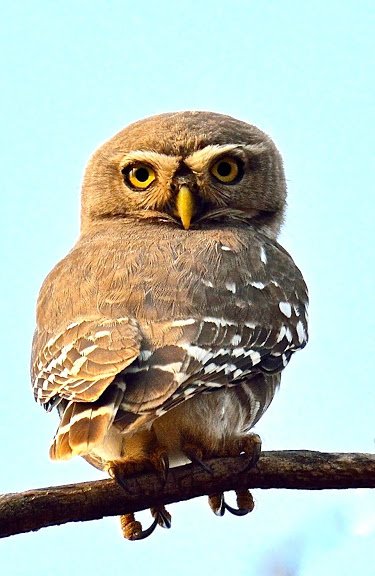











Congrats on seeing such a rare bird and thanks for sharing your exciting story! Looking forward to hearing about more of your adventures.
Thank you for sharing so many beautiful creatures. I want to go to India!
Thanks, Pat, I am looking forward to share more 😉
Thank you, Van, India sure has a lot to offer to a visitor, especially a birder, and I will be writing more about my Indian experiences.
What a beautiful owl! I enjoyed your story and all the photos.
Sweet and sublime story–may you see more of these lovely creatures and enjoy your sojourns through India’s forests…